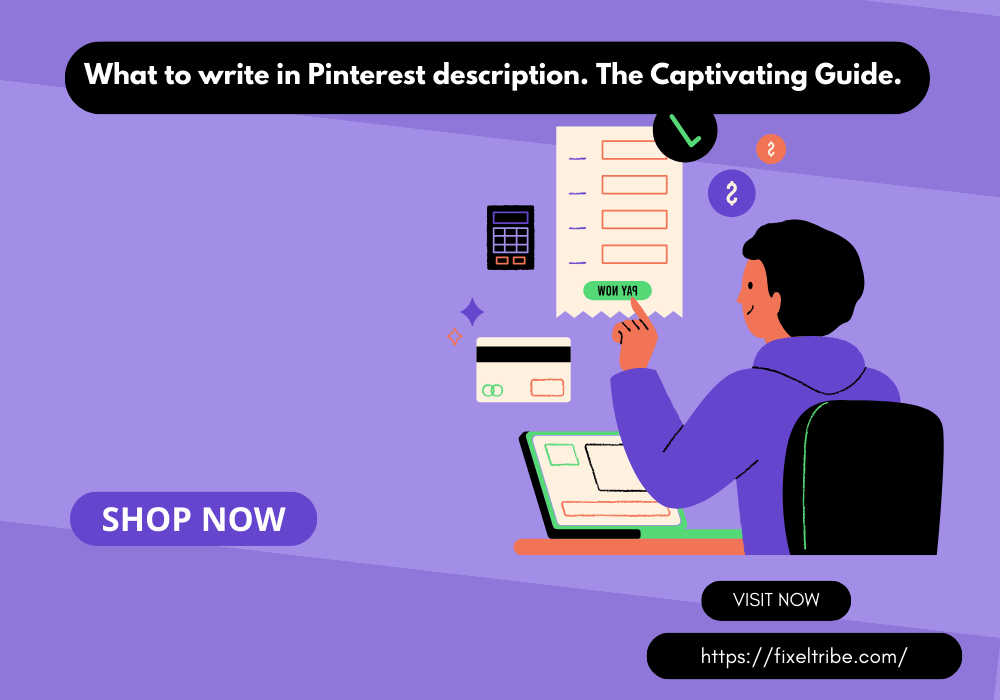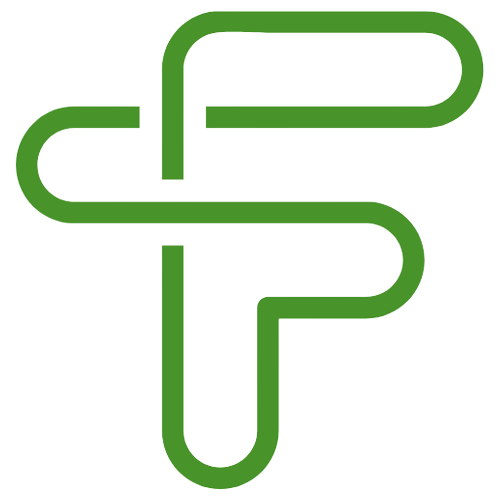Writing Pinterest Descriptions: Captivating Your Audience
In the visually captivating realm of Pinterest, where a single image has the potential to convey a thousand words, the role of a well-crafted description takes center stage. Each time you pin an image or curate a board on Pinterest, your description becomes the vital link connecting your content with your audience. It’s not merely a string of words; it’s your golden opportunity to provide context, ignite curiosity, and enhance discoverability.
In the following sections, we’ll embark on a journey to explore the art of crafting Pinterest descriptions – descriptions that not only captivate but also wield the power to optimize for SEO, ultimately driving more traffic to your pins. So are you ready to learn What to write in Pinterest description.
How Do You Write a Good Pinterest Pin Description?
1. Be Descriptive and Concise:
Your Pinterest pin description is the window through which users view your content. Therefore, it should concisely and vividly convey the very essence of your pin. Aim to encapsulate the heart of your pin in a few well-chosen words. But don’t stop there; sprinkle relevant keywords naturally within your description. This keyword incorporation serves a dual purpose: it improves the discoverability of your pin on Pinterest’s platform and enhances its visibility on external search engines.
2. Use Relevant Keywords:
To write an effective Pinterest pin description, it’s imperative to think like your target audience. Imagine the terms and phrases they might use when searching for content similar to yours. Conduct research to identify these relevant keywords and seamlessly weave them into your pin’s description. By strategically employing keywords, you ensure that your pin aligns with users’ search queries, boosting its chances of being found.
3. Create a Call to Action (CTA):
Engagement is the lifeblood of any social platform, and Pinterest is no exception. A well-crafted call to action (CTA) within your pin description can do wonders in encouraging user interaction. Whether it’s a gentle nudge to “Click for more,” a suggestion to “Save for later,” or an invitation to “Explore now,” a CTA invites users to take action. It’s a direct and persuasive way to prompt users to engage with your pin, be it through clicks, saves, or shares. A thoughtfully placed CTA can significantly enhance the overall impact of your pin.
In the visually rich landscape of Pinterest, where images reign supreme, a well-crafted pin description serves as the guiding star, ensuring that your content is not lost amidst the visual splendor. By being descriptive yet concise, strategically incorporating relevant keywords, and including a compelling call to action, you can harness the full potential of Pinterest descriptions, making them valuable assets in your quest for greater engagement and discoverability.

What to Put in Pinterest Description/What to write in Pinterest description.
1. Pin Context: A compelling Pinterest pin description begins with providing context about your pin’s content. It’s your opportunity to explain what the image represents, the story it tells, or the solution it offers. When users encounter your pin, a clear and concise description ensures that they quickly understand its value. Whether it’s a mouthwatering recipe, a stunning travel destination, or a DIY project, articulate what your pin is about and why it’s worth exploring.
2. Additional Details: To enhance trust and practicality, consider including relevant details about the image within your description. If your pin features a product, share specifications like size, color options, and unique features. For recipes, list ingredients and cooking instructions. DIY projects benefit from step-by-step instructions. Specifics not only make your content more trustworthy but also increase the likelihood of users engaging with your pin.
3. Hashtags: Harness the power of hashtags to categorize your pin and improve its discoverability. Strategic hashtag usage helps users find content relevant to their interests. Research trending and niche-specific hashtags related to your pin’s topic. While you can include multiple hashtags, aim for a balance—2 to 3 well-chosen hashtags per pin typically suffice. Incorporating hashtags into your description increases your pin’s visibility and extends its reach beyond your followers.
How to Write Pinterest Board Descriptions
1. Board Theme: Your Pinterest board description serves as the introduction to the curated content within the board. Clearly define the theme or purpose of the board within this description. Use keywords that are directly related to the board’s content to attract a relevant audience. If your board features home decor ideas, for instance, use keywords like “interior design,” “home improvement,” or “decor inspiration” to signal what users can expect. A well-defined board description helps users understand the board’s focus and encourages them to explore its pins.
2. Update Regularly: Pinterest boards are not static; they evolve as you add new pins and refine your content. Reflect these changes in your board description by keeping it fresh and aligned with the board’s current contents. When you make updates or add new pins that expand the board’s scope, modify the description accordingly. This practice ensures that users always have an accurate understanding of what the board offers.
3. Curation Approach: Share insights into your curation approach within the board description. Explain why you’ve chosen specific pins and what value they offer to users. If your board is about travel destinations, mention whether it focuses on budget travel, luxury getaways, or family-friendly destinations. Providing this context helps users navigate your board with a clear understanding of your curatorial perspective.
In the world of Pinterest, where visual content reigns supreme, the role of descriptions is often underestimated. Yet, by incorporating these strategies into your pin and board descriptions—providing context, offering additional details, and using hashtags effectively—you not only improve the discoverability and engagement of your pins but also enhance the overall user experience. Remember that a well-crafted description can be the key to making your content stand out and resonate with your audience amidst the visual splendor of Pinterest.
Writing Attention-Grabbing Pinterest Descriptions
1. Intriguing Language: In the realm of Pinterest, where visuals take center stage, language plays a pivotal role in making your pins stand out. To captivate your audience, employ engaging and descriptive language that not only informs but also piques curiosity. Pose questions within your descriptions to spark users’ interest. Such inquiries encourage users to explore your pin in search of the answers, increasing engagement. Share surprising facts related to your pin’s topic to ignite fascination. Utilize vivid adjectives to paint a picture and create an emotional connection between the user and your content. Instead of describing a recipe as “delicious,” opt for “mouthwatering” or “decadent” to evoke a sensory experience that encourages users to try it.
2. Storytelling: One of the most potent tools at your disposal is the art of storytelling. Narrative descriptions that tell a story or unveil the backstory of your pin can captivate users and establish a deeper connection. Share the journey behind the creation of your product, the inspiration that led to your DIY project, or the personal experiences related to your travel pin. Stories create a sense of relatability and intrigue. They allow users to immerse themselves in your content, making it more memorable and shareable. By weaving a narrative into your descriptions, you invite users to become a part of your story, increasing their engagement and encouraging them to explore further.
3. Emotions: Pinterest is not just about saving images; it’s about capturing emotions and aspirations. Tap into the power of emotions by describing how your pin can make users feel. Whether it’s the joy of discovering a new recipe, the inspiration to embark on a DIY project, or the nostalgia evoked by a vintage photograph, emotional resonance is a potent driver of engagement. Craft descriptions that convey the emotional impact of your content. For example, “This heartwarming family recipe will fill your home with warmth and nostalgia.” By connecting your pin with users’ emotions, you create a deeper and more personal connection. Emotionally resonant descriptions are more likely to lead to saves, clicks, and shares.
Conclusion:
In the vibrant world of Pinterest, where captivating visuals reign supreme, crafting compelling descriptions is an art that combines clarity, SEO optimization, and the power to engage your audience on an emotional level. By embracing intriguing language that sparks curiosity, storytelling that invites users into your narrative, and emotions that resonate with their feelings, you can transform your pins into irresistible invitations. These descriptions not only enhance your pins’ discoverability and user interaction but also contribute to the overall Pinterest experience. So, whether you’re a seasoned pinner or a newcomer, mastering the art of Pinterest descriptions can elevate your visual content and inspire greater engagement on this visually inspiring platform.
FAQs
FAQ 1: Why are Pinterest descriptions important for pins?
Pinterest descriptions are crucial because they provide context and information about your pins. They help users quickly understand the content, purpose, and value of a pin, encouraging them to engage with and save it.
FAQ 2: How long should a Pinterest description be?
Pinterest descriptions can be up to 500 characters long, but it’s best to keep them concise and to the point. Aim for clarity, providing relevant information without unnecessary verbosity.
FAQ 3: Should I include keywords in my Pinterest descriptions?
Yes, incorporating relevant keywords into your Pinterest descriptions is essential for improving discoverability. Use keywords that align with your pin’s topic and that users might use when searching for content like yours.
FAQ 4: Can I use hashtags in Pinterest descriptions?
Yes, you can use hashtags in Pinterest descriptions to categorize your pins and enhance discoverability. Research and include relevant and trending hashtags related to your pin’s content.
FAQ 5: What should I include in a pin description for a product pin?
For a product pin, describe the product’s features, benefits, and use cases. Include details such as size, color options, pricing, and any unique selling points. Make the description clear and informative.
FAQ 6: How can I make my pin descriptions more engaging?
To make pin descriptions more engaging, use vivid language, pose questions, share interesting facts, or tell a story related to the pin. Convey emotions and aspirations to connect with users on a personal level.
FAQ 7: Are there any best practices for writing board descriptions on Pinterest?
Yes, when writing board descriptions, clearly define the board’s theme or purpose using relevant keywords. Update the description regularly to align with the board’s current content. Additionally, share your curation approach, explaining why certain pins are chosen and the value they offer to users.
FAQ 8: How can I measure the effectiveness of my Pinterest descriptions?
You can measure the effectiveness of your Pinterest descriptions by monitoring engagement metrics such as saves, clicks, and comments on your pins. Analyzing which descriptions lead to higher interaction can guide your future strategies.
FAQ 9: Can I update pin descriptions after they’ve been pinned?
Yes, you can update pin descriptions even after they’ve been pinned. Click on the pin, then click the pencil icon to edit the description. Updating descriptions can improve their relevance and performance.
FAQ 10: Should I include a call to action (CTA) in my pin descriptions?
Including a CTA in your pin description can encourage user engagement. Invite users to take action, such as clicking for more details or saving the pin for later. A well-placed CTA can boost interaction with your pins.


you are truly a just right webmaster The site loading speed is incredible It kind of feels that youre doing any distinctive trick In addition The contents are masterwork you have done a great activity in this matter
very informative articles or reviews at this time.
Simply wish to say your article is as amazing The clearness in your post is just nice and i could assume youre an expert on this subject Well with your permission let me to grab your feed to keep updated with forthcoming post Thanks a million and please carry on the gratifying work